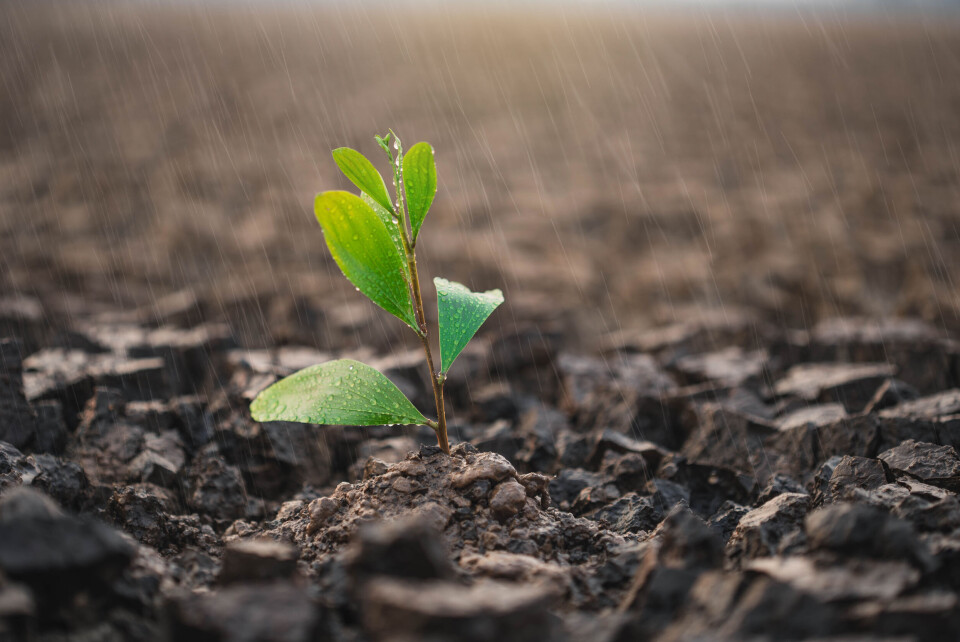-
White storks make strong return in France via nest ‘platforms’ and clipped wings
The Ligue pour la Protection des Oiseaux shares the conservation challenges in saving these birds from extinction
-
Hosting scheme in south-west France lets newcomers sample lifestyle
Households in nine Dordogne communes volunteer under Mes Nouveaux Voisins scheme
-
French boulangeries demand right for staff to work on May 1 so they can open
Artisan bakery owners can work but employees cannot, while certain industrial bakeries are allowed to remain open with workers
March rain not enough to make up for France’s record winter drought
Rainfall is around 10% below the September-March average, said Météo France

March rainfall in France was not enough to fully reverse the country’s record-breaking winter drought, the national meteorological service has stated.
Météo France said the September-March period was traditionally when France’s groundwater levels are recharged.
But a record winter dry spell - 32 consecutive days without rain - saw drought restrictions imposed in some parts of the country.
Météo France said at the end of February, the country was 149mm under average rainfall for the September-March period.
It added that March’s rain had helped recover the situation.
But the country was still 10% under average rainfall levels for the six months, it said, adding that while the north of France was in a better position, the dryness of soil in the south remained a problem.
South is the hardest-hit region
The rain has not brought relief to all areas of France equally – apart from Hérault, all the Mediterranean coastal departments have water restrictions of level two or above, with the south-east particularly affected.
Bouches-du-Rhône has a code 4 ‘crisis’ warning in place, limiting water to only essential usage.
Read more: How bad is the drought in France? See restrictions in your department
In Breil-sur-Roya (Alpes-Maritimes), where drought restrictions are already at the third-highest level, it has only rained twice since the start of the year, worrying nearby farmers.
“In the next few days, we’re going to run out of grass to feed [the animals],” said Mickaël Viale, who has around 1,200 lambs and ewes to look after.
Subsequently, the mayor has called on social media for residents to take severe caution and make sure water is not being wasted.
“There is a real risk that this summer… we will no longer have a supply of drinking water,” said Mayor Sébastien Olharan.
New sources of water, such as from a nearby spring, are being hastily hooked up to the village, but worries remain.
📊Ces pluies conséquentes du mois mars ont eu un impact positif/très positif sur la #sécheresse des sols.
— Météo-France (@meteofrance) April 4, 2023
Une sécheresse qui persiste toutefois du Roussillon à l'extrême sud-est du pays en passant par les Cévennes.
⬇️ pic.twitter.com/ImCewrt9Lv
Most of the country, however, benefitted from the March rain, which left the east and Atlantic west in a much better shape than one month ago,
Read more: Drought-hit French commune gives locals free water-saving devices
‘Water plan’ to combat the issue
Since last year’s summer droughts, it has been obvious to many that changes had to be made to prevent subsequent water shortage issues from spiralling out of control.
Last week, President Emmanuel Macron announced the country’s long-awaited ‘water plan’, which is geared towards helping France tackle the threat of water shortages by implementing restrictions and water-saving measures.
Key aspects of the plan include a progressive ‘water tariff’, which aims to reward those that conserve supplies. It also aims for a reduction of water usage – by around 10% – across a number of sectors.
With predictions of another difficult and drought-laden summer, however, it is unknown if the plan will come into force early enough to stave off another crisis.
Related articles
‘Very unsatisfactory’: Alarm raised over France’s groundwater levels
Seven tips on how to save water and reduce your bills in France
























